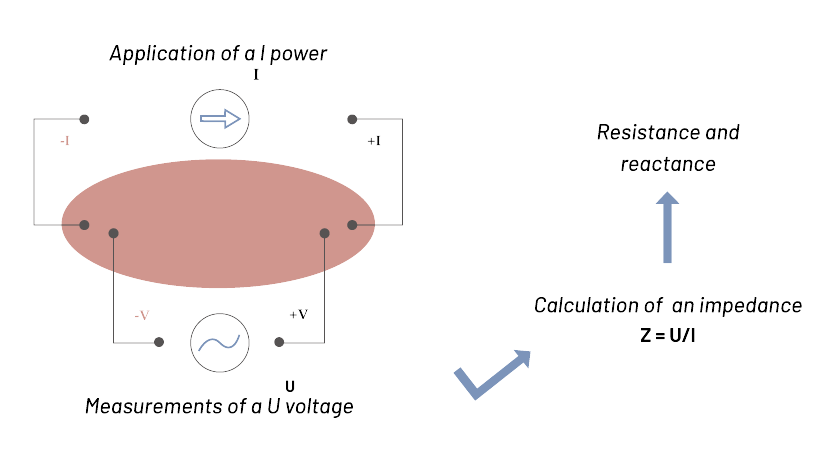Impedance measurement: what is measured?
This technology focus on the electrical properties of a biological medium. Bioimpedance allows simple, fast and continuous measurements. Its principle is simple: a low-intensity alternating current (of the order of 70 μA) is applied to the body between two injection electrodes. The current will therefore pass through the most conductive compartments (water, electrolytes, muscles, …) and avoid the most insulating at low frequency (cell membranes, fat mass, skin, …). At the receiving electrodes, a tension will be raised and will correspond to the tissues opposition to the passage of the current.

Two interpreted data: resistance and reactance
A voltage is thus measured at the receiving electrodes. This signal will be interpreted as two data: the resistance R, which corresponds to the non-conductive elements, and the reactance X, which represents the capacitive effect of the membranes. The combination of these two data is the impedance Z.
In bioimpedance, the cell membrane is considered a capacitor. Insulating at low frequency, the cell membrane causes an accumulation of charges on each side without these electrical charges being able to pass through it. This membrane causes a variation in the current behaviour of the cells. When the frequency is low (<40kHz), current does not enter the cell. When the frequency increases, the current will enter the cells and the data collected will be both intracellular and extracellular. Indeed, at high frequency, electrical charges do not have time to accumulate on either side of the membrane and the current will therefore pass through the ion channels. The boundary between the two is difficult to quantify but it is accepted that from 150 kHz onwards, the majority of compartments are penetrated.
The measured electrical data, combined with the patient’s data, will be used to calculate the various body composition indicators.
